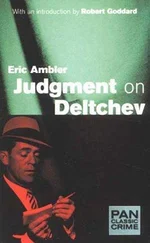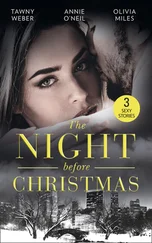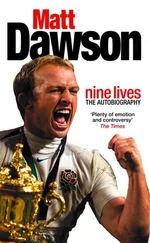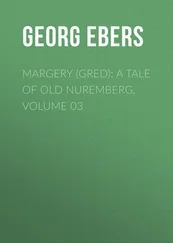So, yes, Fagin was correct—indeed it’s a macabre understatement—to say the Nazis on trial in Kharkov were “political enemies” of the Soviet Union. It was a semantic point as irrelevant to the larger point as her geography lesson. The legal pretext for the Kharkov trial of the Nazis was less important than their alleged crimes. For the victims, dead was dead.
I asked Fagin if she would change or add anything if she were writing history for the memorial today. “I don’t know,” she said. “I have not seen the recent research. I no longer teach history. I am now teaching morality.”
Ukraine’s standing, until quite recently, as a distant, dark planet in the universe of the Holocaust knowledge—very much a self-imposed isolation by the secretive Kremlin masters—was evident in the itinerary of a 57-member commission President Carter appointed in 1979 to prepare a report that laid the foundation for the U.S. Holocaust museum in Washington, D.C. The commission’s first stop on a fourteen-day fact-finding mission was Poland, where it visited the site of the Warsaw Ghetto, the death camps at Treblinka and Auschwitz, a Jewish cemetery in Warsaw, and was given a tour of Polish archives pertaining to the war. The commission, led by Elie Wiesel, met with a host of government and cultural ministers, viewed Polish documentaries about the Holocaust, and attended a performance at a Jewish theater in Warsaw.
The next stop, in the Soviet Union, was comparatively brief. The only Holocaust site the commission visited was Babi Yar, where the members—many of them distinguished scholars and authors of Holocaust books—were “shocked” to find no acknowledgement that nearly all the victims of the massacre had been Jewish—an indication of just how little was still known, even by experts, about this far-flung flashpoint of the Holocaust. In Moscow the commission met with various ministers and the chief Soviet prosecutor at Nuremberg, and laid a wreath at the Tomb of the Unknown Soldier. Then it was off to Denmark.
The twenty years since Ukraine went from being a closed Soviet republic to an open, independent state has seen a profusion of literature, scholarship, and journalism about the Holocaust and its aftermath in Ukraine, but people are resistant to change and thinking outside the box; they love their fixed paradigms and rusty icons. It will take time for “news” and revelation from the Ukraine to penetrate the public’s holy trinity of Anne Frank, Auschwitz, and Schindler’s List. There is a lag—to borrow Wiesel’s formulation—between public “information” and the public’s “knowledge,” or awareness.
The glacial progress was evident in two state-of-the-art world history textbooks I examined which are used in the Orange County (Fla.) school system, one of the largest in the U.S. The Ukraine is not mentioned directly in the chapter on the Holocaust. It is encouraging that the Einsatzgruppen killings are included, but they are described, vaguely, as having occurred “in eastern Europe.” To revisit my own analogy, can you imagine a textbook today saying that on Dec. 7, 1941, the Japanese attacked a U.S. naval base “in the Pacific”?
But the textbook writers are not so far behind the historical curve or cultural Zeitgeist, judging by story selection in the New York Times , which not only reports on the Zeitgeist, but is itself a part of it. On April 20, 2009, Holocaust Remembrance Day, I found a story about Ukraine on page 6A, with two photos, which took up half the page under the headline “New Looks at the Fields of Death for Jews”—graphic testimony to the time warp from which the Holocaust in Ukraine is just now emerging.
“People know of Auschwitz and Sobibor,” wrote Ethan Bronner. “Many have heard of the tens of thousands shot dead in the Ukrainian ravine of Babi Yar. But little has been known about the hundreds, perhaps thousands, of smaller killing fields across the former Soviet Union where some 1.5 million Jews met their deaths.”
The story ran on the same day the Yad Vashem Holocaust museum and research center in Jerusalem made public on its Web site new information about Nazi killing sites in a host of smaller towns and villages in Ukraine, Belarus, Lithuania, and Latvia. “In many cases, locals played a key role in the murders, probably by a ratio of 10 locals to every one German,” said the head researcher. “We are trying to understand the man who played soccer with his Jewish neighbor one day and turned to kill him the next.”
It is likely that my mother’s family was betrayed the same way, by friends, or at least acquaintances, in the building on Katsarskaya Street in Kharkov where they lived in December 1941 when the Nazis rounded up all the Jews—the ones who had not fled east—on the pretext of marching them to a labor camp. My mother and her sister escaped the march—my mother by her father’s bribe, and Frina by unknown means (she has never spoken of it to anyone, to my knowledge, except possibly her husband). The rest were murdered just after New Year’s at Drobitsky Yar, a larger cousin of the killing fields, which are still being discovered today in Ukraine, even as denier Web sites proliferate in cyberspace.
I had always regarded Holocaust deniers as the looniest of the lunatic fringes, peddlers of a theory so laughably, patently false that it made alien-abduction and telepathic spoon-bending look like good science. The notion that the Holocaust did not happen wasn’t worth my attention or acknowledgement, much less my concern five years ago. That all changed after Hiding in the Spotlight was published and I discovered the great void in common knowledge about the Holocaust in Ukraine. There were many more open, malleable minds up for grabs than I had ever imagined possible—targets for the deluded demagogues and sociopathic liars from Denial Land. And hadn’t we heard from the forefathers of these fabulists before—in Germany in the 1930s? I saw the opportunity to provide an antidote.
Hiding in the Spotlight took me to numerous middle schools and the most achingly vulnerable minds of all, soft clay waiting to be shaped—or misshapened. Nowhere was the response to my mother’s story so sharp or personal as it was in these classrooms, perhaps because it was about someone the same age as the students themselves. It could be their story.
A couple of weeks after a middle-school talk, we always received a large envelope with individual thank-you notes from the students. They were portraits of minds and sensibilities in uneasy transition from childhood to adult consciousness. The rainbow lettering, squiggly lines, blockletter THANK YOU’s and purple hearts on the front often belied a darker message inside.
“I learned so much. I never knew about the holes people got shot into. So sad.—Rachel.”
“Your mom’s story is the most earth-shattering thing I ever heard. I did not know about the killing fields. I only knew about the death camps, and to hear about what your mom went through just really hit me.—Lauren.”
“You taught me so much. I hardly knew anything about the Holocaust before you came to our school. Now I know way more than enough.—Drew.”
“I can’t imagine what it would be like living in Germany at that time. Never knowing if the Nazis will barge into your house, hearing screams for mercy when you are trying to sleep. You have changed how I look at the normal everyday things I have. I’m more grateful and thankful. I can’t wait until I get to share all I know about the Holocaust with my friends.—Katie.”
The words were different, but I think all four were saying the same thing: Never again.
Irealized this book needed a brief primer on Ukraine the day a neighbor, Ted, told me he thought Moscow was west of Ukraine. In fact, it’s the reverse. Most of Ukraine lies west of Moscow. Ted also thought that Moscow was south of Ukraine—again, quite the opposite.
Читать дальше












